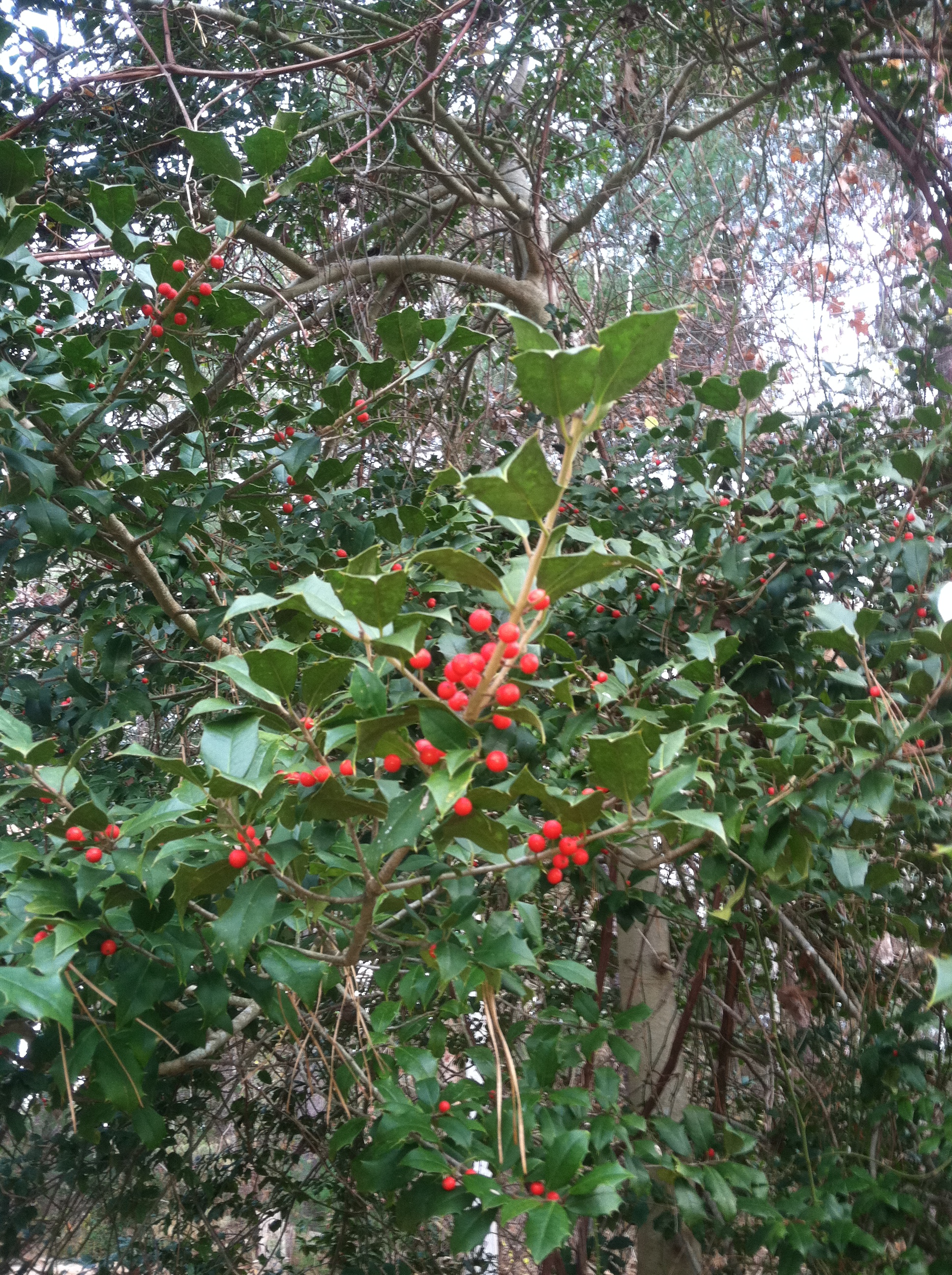Winter Observations, Camp History Uncovered
by Asa Gallagher, Camp Burgess Director
The approaching winter season brings great change to the landscape of Cape Cod. Kettle ponds freeze over with a dense sheet of ice while snow and frost coat the ground and halt the growth of most living plants. And the forest becomes a skeleton of its once robust summer form, a result of the cold that most historians and day hikers hold in great appreciation. As any walker of trails would tell you, when the leaves and needles start falling to the ground, an entire world opens into the normally shrouded wall of tree limbs and brush. In the winter months, the space between trees is clear, and the curiosity for what lies within is something that I myself cannot resist.
An American Holly Tree provides sustenance to native bird species, and lends a splash of color to Camp’s post-summer landscape
This will be my fourth winter living at Camp Burgess. As with any place, the more time spent here, the more you discover about the history of this great property. I have found that when the camp woods die down for the cold season, an entire historical picture comes to life, like opening a door in an old house to find a new room that nobody had known about.
Relics of eras gone by
In the trees behind Triangle House, I have found a cement staircase, a crooked electric pole, remnants of a cement wall and scattered pieces of an old lamppost. Across the street in the orchard lays an abandoned water pipe that carried pond water to the area. This pipe once originated from the old pump house on Triangle Pond, of which only a perfectly square foundation still exists today, only to be seen when the weeds start to give way in October. As you stroll up Jimmy Burke Lane toward the dining hall, the fragments of a stone wall can be seen on your right as you walk the hill. The town archives describe an old farm house that once sat in the parking lot area, and this wall is said to be a piece of that property dating back to the beginnings of our camp. Off in the woods near the Cape View Cabins, another square cement foundation sits about ten inches in height above the ground. The path that leads to Kiah’s way behind the lodge has stumps of old electric poles dotting its banks, and about half way down you can start to see huge holes left by either torn foundations, or by the Laurentide glacier that formed Cape Cod about 15,000 years ago, leaving land holes of varying sizes behind as it thawed. There are traces of the past in every corner of these woods – names carved into trees on the edge of the swamp, ceramic pieces unearthed by digging machines, old glass bottles found deep in the forest, discarded medal bins and pieces of old sailboats off the edge of the maintenance yard.
We tend to stay inside when the winter comes. As with any season, we react to the present condition. We swim in the summer because the water is warm. We rake in the fall when the leaves come down. Living here at camp has taught me to go against the present circumstance, to go outside no matter the condition – even in the bone cold days of winter. Besides the fresh air embracing you and helping to break your cabin fever, the winter is the perfect time to peek into the past by simply walking outside.


